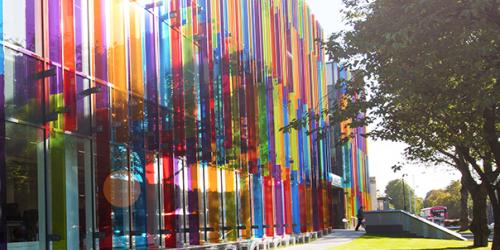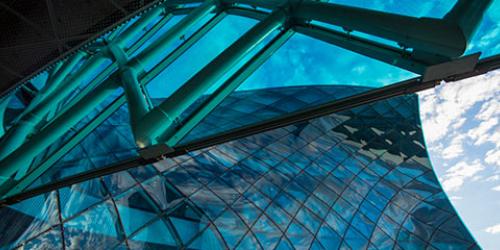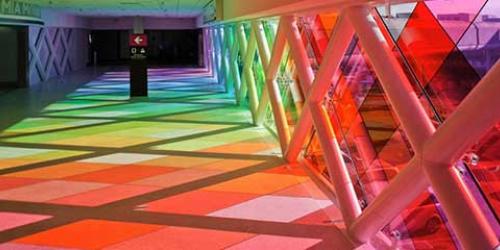Color Brings Smiles for Pediatric Patients
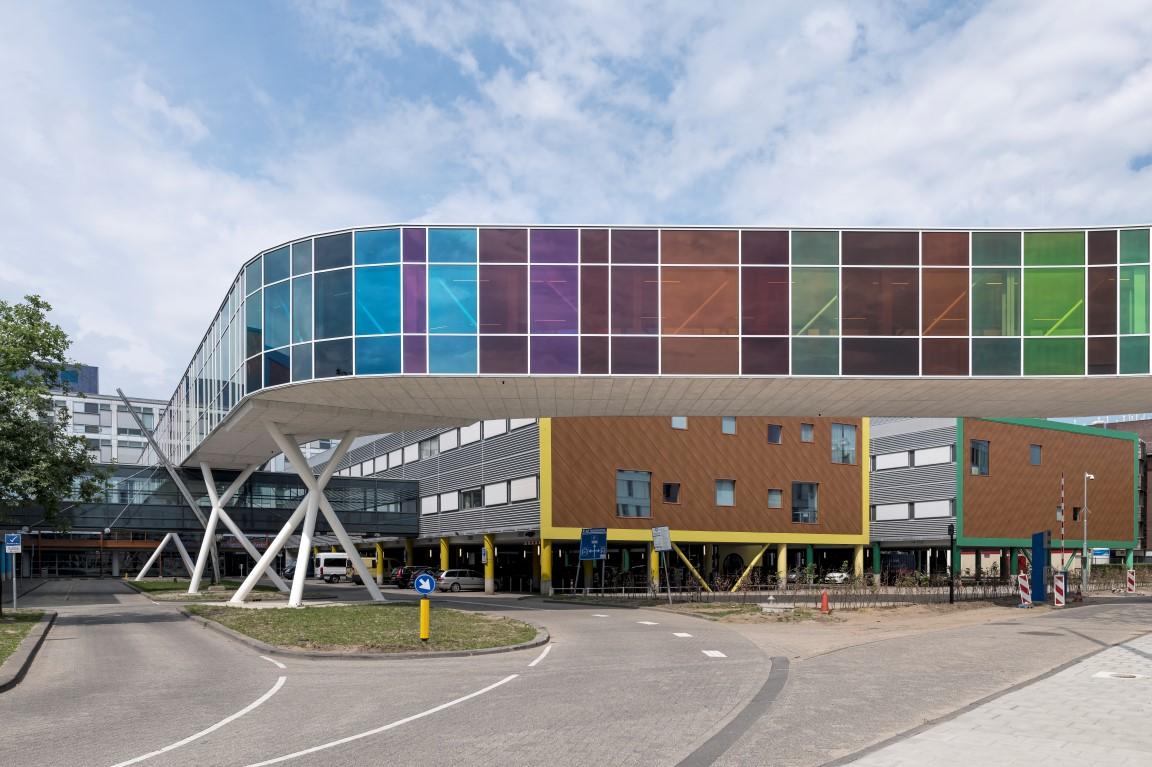
An elevated glass pedestrian bridge connecting Wilhelmina Children’s Hospital with the pediatric oncology clinic to Princess Maxima Hospital in the Netherlands is a literal tonal bridge. The explosion of color and light from the passageway of the Rainbow Pedestrian Bridge offers hope and inspiration to young patients, their families, and medical staff as they traverse between buildings for treatments. Rainbows symbolize happiness — of better things to come — so what better way to express that sentiment architecturally than with a stunning glass feature made up of 15 colors ranging from red, orange, and yellow to green, blue, and violet in multiple combinations.
Dynamic Color Packs a Functional Punch
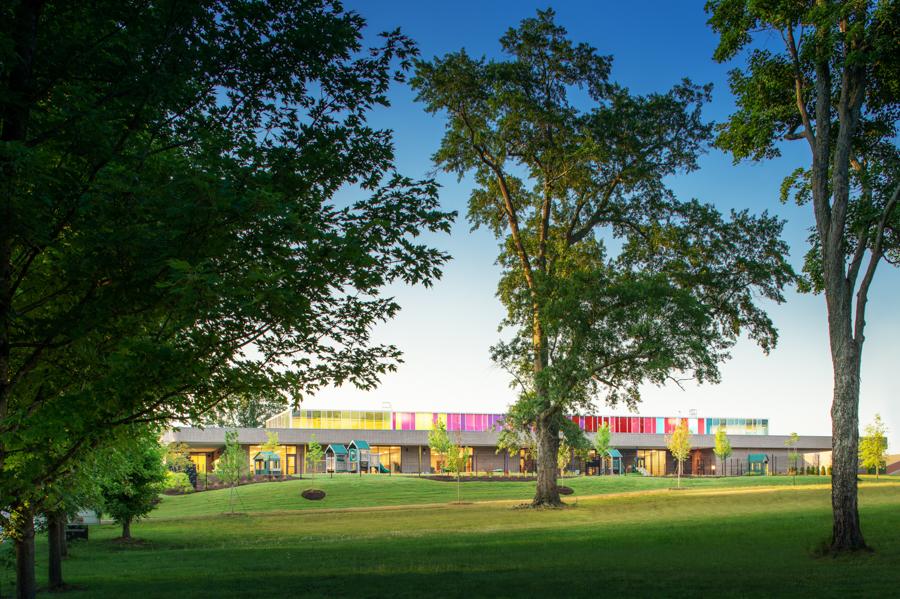
The primary colors of yellow, red, and blue are often used in early learning centers because of their familiarity and positivity for young children. Glass is an ideal medium for blurring interior and exterior lines. For the Franklin Early Childhood Center in Spartanburg, South Carolina, a multi-colored glass structure atop the building opens the school up to the community, symbolizing how learning extends beyond classroom walls.
Ed Buglewicz, AIA, of RDG Architects in Des Moines, Iowa, explained how the colorful glass canopy serves multiple purposes at the Franklin Early Childhood Center. “At night, the backlit colors create a welcoming beacon of light for the community. The blues and yellows at each end of the building offer wayfinding benefits. We integrated the colors of the Franklin School logo into the design, which helps to define the school’s brand image of a child-centric, playful place. Finally, the color bridge hides unsightly maintained equipment on the rooftop.”
Working with Tonal Bridges
With Vanceva® color interlayers, designers have a palette that can be combined to create more than 17,000 transparent, translucent, or solid colors. To create a tonal bridge, select a key color as the center point — such as violet in the examples below. A bridge can be built using warm colors on one side, taking violet to pink, and cool colors on the other side, taking violet to blue. Vanceva® colors are designed using base colors similar to those chosen for the CMYK color system: Cyan (blue), Magenta (red), Yellow and Black. Vanceva also has the unique advantage of including a range of whites that give flexibility to choosing transparent, translucent or solid colors just by layering the interlayers together.
The example shown uses pink, purple, and blue. A color is selected, and then worked from either side. With purple as the center color, a bridge is built from warm colors to pink on one side and cool colors to blue on the other.
For more information on designing with Vanceva® interlayers, check out our color selector tool at vanceva.com.







